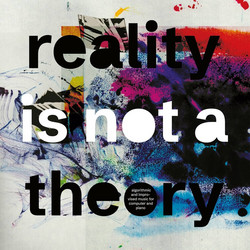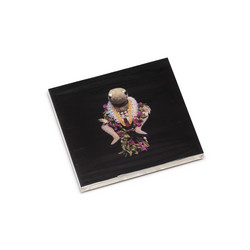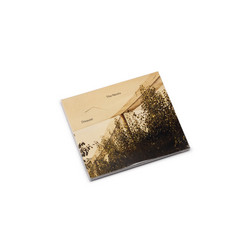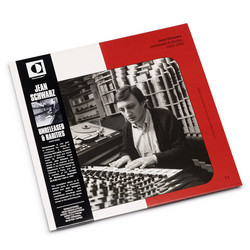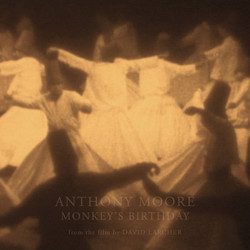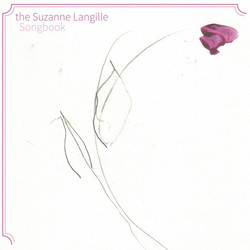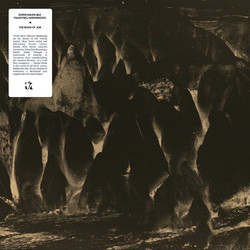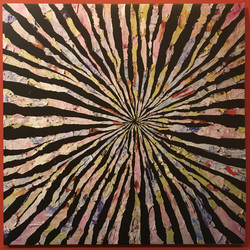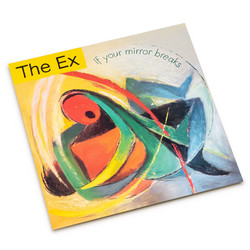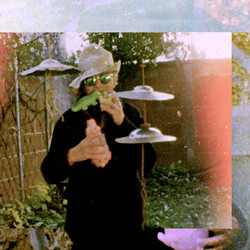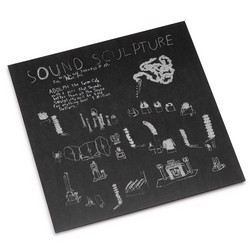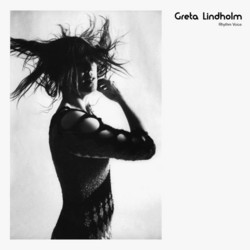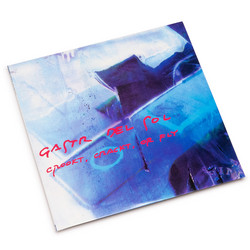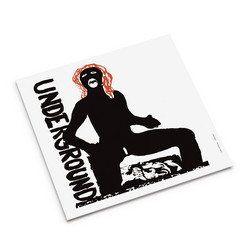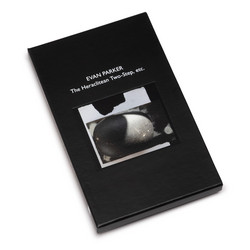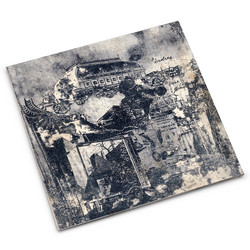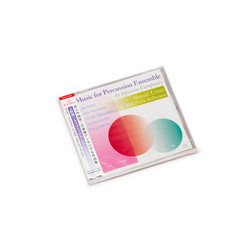We do require your explicit consent to save your cart and browsing history between visits. Read about cookies we use here.
Rebecca BinnsFeaturing: Gee Vaucher
Gee Vaucher: Beyond Punk, Feminism and the Avant-Garde (Book)
As one of the people who defined punk's protest art in the 1970s and 1980s, Gee Vaucher (b. 1945) deserves to be much better-known. She produced confrontational album covers for the legendary anarchist band Crass and later went on to do the same for Northern indie legends the Charlatans, among others. As well as offering an overview of Vaucher’s career, the book also offers a whistle-stop tour through later 20th century counterculture. We hear about the Fluxus movement; COUM Transmissions (the collective led by Genesis P Orridge of Throbbing Gristle, who Vaucher seems to have had very little time for); the 1970s gatherings at Stonehenge; free festivals; the radical underground press; the Situationists.
More recently, her work was recognised the day after Donald Trump's 2016 election victory, when the front page of the Daily Mirror ran her 1989 painting Oh America, which shows the Statue of Liberty, head in hands. This is the first book to critically assess an extensive range of Vaucher's work. It examines her unique position connecting avant-garde art movements, counterculture, punk and even contemporary street art. While Vaucher rejects all 'isms', her work offers a unique take on the history of feminist art. The book explores how her life has shaped her output, with particular focus on the open-house collective at Dial House in Essex, a centre for radical creativity.
Record sleeves and album artwork are often cited as the things that get people into graphic design – or even get people knowing what the discipline is in the first place. For many, they’re the most obvious site where art meets commerce; where collaboration between a particular visual artist and musician(s) becomes evident. As such, there’s certainly an established, if unofficial, canon when it comes to famous sleeve design, especially in the UK. There’s Malcolm Garrett and his work with Buzzcocks and Duran Duran; Peter Saville’s Factory Records designs; Vaughan Oliver’s distinctive designs for 4AD; Barney Bubbles’ iconic Stiff Records work.
But on the whole, we don’t see too much in the way of women’s sleeve designs (with Linder’s superb image on the Garrett-designed Orgasm Addict the exception, of course). However, a new book is looking to remedy that, in the case of one designer at least, by celebrating the work of Gee Vaucher. Authored by Rebecca Binns, a writer and lecturer on art, design and cultural history, the book is published by Manchester University Press, and offers the first critical assessment of Vaucher’s work. According to the publisher, Vaucher is “one of the people who defined punk’s protest art in the 1970s and 1980s” and as such, “deserves to be much better known”.
Among the bands she created sleeves for are anarcho-punk stalwarts Crass; and as the book illustrates, she also collaborated extensively with band member Penny Rimbaud on artworks such as performances at venues including the Museum of Modern Art in Oxford. She also created illustrations for his set of 50 poems titled Acts of Love, which were assembled in an LP case with no record in it. The set was published in 1984 once Rimbaud had created music to accompany the poems, and after Crass had disbanded.
As well as offering an overview of Vaucher’s career – which also included designing sleeves for The Charlatans and seeing her 1989 painting Oh America! appear on the front page of the Daily Mirror the day after Trump’s 2016 election victory – the book also offers a whistle-stop tour through later 20th century counterculture. We hear about the Fluxus movement; COUM Transmissions (the collective led by Genesis P Orridge of Throbbing Gristle, who Vaucher seems to have had very little time for); the 1970s gatherings at Stonehenge; free festivals; the radical underground press; the Situationists.
We also learn about Vaucher’s relationship with punk’s most famous designer, Jamie Reid. According to the book, the pair shared “an anarchistic outlook, valuing personal and political autonomy rather than conventional career structures”. The same chapter goes on to pay Linder Sterling her due, discussing her work with Buzzcock and Magazine, which was often created under assumed names like Anxious Images; as well as her work for Factory Records and the Haçienda.
“This book examines [Vaucher’s] unique position connecting avant-garde art movements, counterculture, punk, and even contemporary street art,” says the publisher. “While Vaucher rejects all ‘isms’, her work offers a unique take on the history of feminist art. The book explores how her life has shaped her output.”
Rebecca Binns’ new book on the influential punk artist Gee Vaucher goes beyond her association with Crass to examine the political and ethical framework that she used to create her intricate and confronting pieces.
Punk was a visual as well as audio artform with the aesthetic and associated art being a large part of its revolutionary impact and rebellious appeal. A lot has been said about the fashion; the posters and flyers; the Jamie-Reid designs; the Vivienne Westwood clothes etc. But a key part of this visual history is the work of an artist who defined punk’s protest art in the 1970s and 80s- Gee Vaucher Perhaps her biggest claim to punk fame is the work she did with the influential anarchist band Crass, Vaucher being behind their distinctive and confrontational album covers. She has remained a visual political commentator with her works still being seen in exhibitions and on front pages, taking on contemporary social justice issues.
This new book gives Vaucher the attention and analysis her work deserves but has not yet received.
Binns does a thorough and exemplary job of exploring three major facets that contribute to an understanding of Vaucher’s work. There’s a spotlight on the artist herself- her background and formative experiences and how her political and social attitudes were shaped. Then there’s the actual art that she created, with the book giving a thorough dissection of so many of her fascinating pieces. But Binns also adds the context in which Vaucher was working throughout the years and the ideas that were dominant at different times. The post-war nuclear family; the punk movement challenging old ideas on youth culture; the rising poverty in the 80s and Thatcherite politics; the bubbling anti-war movement both in the UK and America- all these were incorporated into paintings and collages. This gives the book a very well rounded feel by chronicling all these influences on a creative life and how they intersect and evolve.
Vaucher’s politics is explored using her own words to add context and personal nuance. From her views on gender and sexuality, to her pacifism and anti-military stance, as Vaucher herself states: “I am an extremely moral person to the point of being ridiculous. But my morals are my own”. This aspect of Vaucher is essential to being able to fully appreciate the motivation and message of her art and perhaps why she worked so well with a band like Crass.
Her own journal International Anthem ran from 1977 to 1984 and subverted ideas of aspiration and traditional gender roles, using images from popular magazines such as Good Housekeeping and Woman’s Own and highlighting that most aspiration was in fact synonymous with capitalism and consumerism. Marketing strategies disguised as values.
She encompassed the DIY ethic and held steadfast to her own values, whether she was working in the UK or during her stint in New York working with publications such as Rolling Stone, Ebony, Crawdaddy and High Times.
Of course she is most well known for her work as part of the punk movement, and more specifically with anarcho-punk band Crass. Binns takes her time in exploring the punk context from a social history standpoint as well as setting out the values and ethics of a complex band like Crass. This helps contextualise Vaucher’s work and sets her amongst- yet distinct from- other punk visual stylists such as Jamie Reid (who worked with the Sex Pistols); Linder Sterling (who worked with The Buzzcocks) and Stiff Records Senior Designer Barney Bubbles.
It was in 1979 that Vaucher settled in punk communal living spot Dial House- a collective of like minded artists, musicians and socially conscious individuals living together in a rural Essex home. It was here she lived and worked as part of Crass- being part of their democratic structure and embodying their anti-branding artistic vision. Vaucher produced the distinctive front covers for ‘The Feeding of the 5000′, ‘Stations of the Crass‘, ‘Penis Envy’ and ‘Yes Sir I Will’ and as well as her paintings for covers and inlays, she also produced short films as part of the work she did to support Crass releases. Gee Vaucher, Still Life with Nude, International Anthem 5: War, 1983, collage.
Binns’ book is meticulously researched and well written, covering an area of punk history that deserves a full spotlight all of its own. Equal parts informing, accessible and compelling, this is the story of a woman whose talent and beliefs have made a huge contribution to conveying punk’s revolutionary message. Including plenty of quotes from the woman herself, Binn’s enthusiasm for the topic and belief that this story needs to be told, is evident on every page. There is also a fabulous collection of 19 colour and 76 black and white illustrations of Vaucher’s work contained within, with comprehensive explanations of the images. You will not miss any of the intricate meanings that Vaucher curated to convey so many complex observations on society.
This is a great read and will appeal to anyone interested in art, history, feminism, punk, biography or just someone who wants a fascinating read on a hitherto under appreciated woman.
Related products
Become a member
Join us by becoming a Soundohm member. Members receive a 10% discount and Free Shipping Worldwide, periodic special promotions and free items.
Apply hereSoundohm is an international online mailorder that maintains a large inventory of several thousands of titles, specialized in Electronic/Avantgarde music and Sound Art. In our easy-to-navigate website it is possible to find the latest editions and the reissues, highly collectible original items, and in addition rare, out-of-print and sometime impossible-to-find artists’ records, multiples and limited gallery editions. The website is designed to offer cross references and additional information on each title, as well as sound clips to appreciate the music before buying it.
Soundohm is a trademark of Nube S.r.l.
